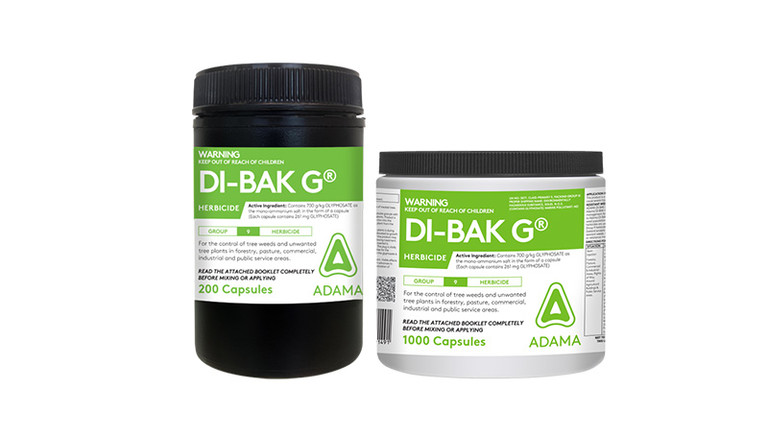
Capsule super-targeter takes on wilding pines

Wilding pines have been a significant plant pest in New Zealand since around the 1970s. ADAMA NZ Otago and Southland Commercial Manager Damian MacKenzie describes the pines’ introduction to this country as “an absolute disaster, environmentally.”
“Wilding pines overwhelm our landscapes and kill native bush and the native species living there. They can also create real fire hazards.”
Damian says ADAMA’s recent introduction of the Injecta 400® and DI-BAK G® could offer New Zealand’s native species, landowners, and forestry a more targeted and efficient response to the ongoing threat.
The Injecta 400’s new technology directly inserts capsules containing Glyphosate into the trunk killing the tree from the inside. Importantly, it also keeps the Glyphosate contained.
Damian explains the method of capsule delivery of the active is superior to both helicopter application and the “drill and fill” approach. “There is no, or low, environmental impact. It does the same job, just better.”
Damian says with this system, the DI-BAK G won’t leak out of the tree optimising efficacy and reducing waste and unintended consequences. “With conventional ‘drill and fill’ the chemical can leak out and escape into waterways. Sealing the DI-BAK G capsules directly into the tree trunk makes the system suitable for even sensitive areas including those adjacent to riparian zones, pastures, and parks.
“This is quick and it’s clean. And in two to three months the tree will be dead.”
DI-BAK G is available in 200 or 1000 capsule bottles for insertion into the Injecta 400.
Damian says a “lifestyle pack” will be available to suit those with smaller blocks.
The Injecta 400 technology also allows treatment under many different weather conditions and in challenging terrain. And there are additional benefits. “Using the capsules, means there’s less chemical than ever before delivering the same result. That reduces your cost of doing business along with your environmental footprint.”
With wilding pines, Damian says we’re reaping the whirlwind previous generations sowed. He says the pines (primarily Pinus radiata) were intended as trials to help control issues including stopping erosion and slips.
Wilding pines grow very densely - taking the sun, water and nutrients that other plants need. Unlike native New Zealand bush - where a wide variety of species exist together - wilding pines produce forests which largely support only other wilding pines.
Once wilding pines start to produce cones, the seeds within them are quickly and effectively spread by the wind. Damian says seeds can travel up to 30km. This leads to a rapid increase in the number of trees.
Around 1.8 million hectares of New Zealand’s unique natural environment is known to be infested with wilding pines. This includes some of our most iconic landscapes such as Mt Tongariro, the Coromandel, the MacKenzie Basin, and Kai Iwi Lakes in Northland.
For more information on the Injecta 400 and DI-BAK G, contact your local ADAMA Commercial Manager.